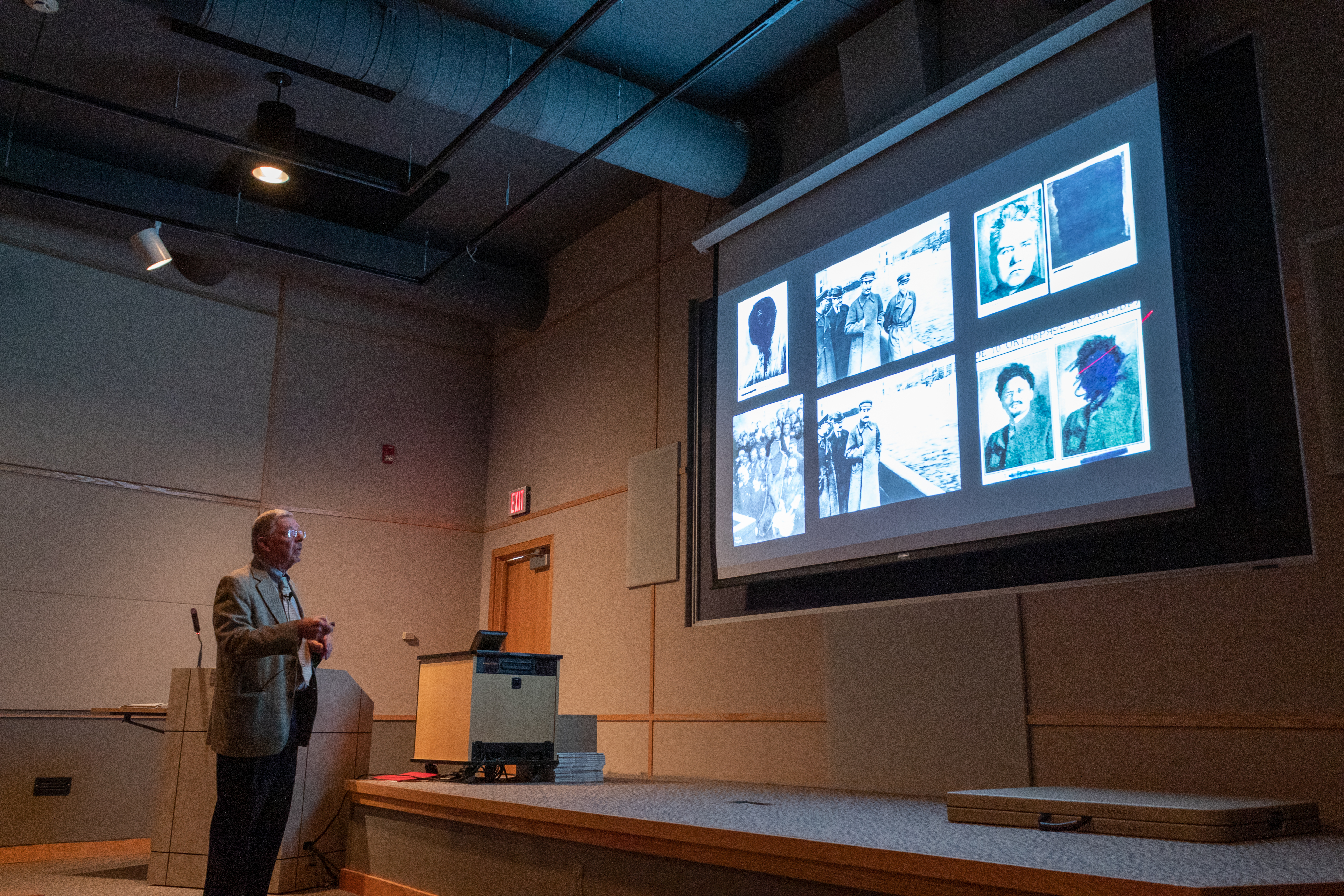By Brianna Gleghorn
Richard Mitchell spoke to a group about the history of still photography, along with its uses, how it has changed and the controversy about editing photos at the Butler Institute of American Art on March 24.
Mitchell introduced photography to the Youngstown State University art department in the early 1970s. After a number of classes had been added, a Bachelor of Fine Arts in photography was offered.
“The power of the still image is that it cannot move, so we can study it,” Mitchell said.
Mitchell divided the uses of photography into two categories: scientific and artistic. He said science is intended to adhere to the objective truth as people see it, a reality people can record.
“Then there’s the artistic side of it, which has to do with what we want things to be as an artist rather than the way things are,” he said.
While the artistic side of photography is often thought of, there is also a authentic side such as photojournalism. Mitchell said with photojournalism, people are talking about the way things are.
“Artistic photographers, however, have something called artistic license. We don’t necessarily have to stick to the truth,” he said.
Wayne Gruver works with the Fine Art Gallery and holiday show information at the Butler Institute of American Art. He said Mitchell has hit on something that a lot of photographers have been debating about.
“[It] has become a point of contention about YouTube and Facebook — what is real and is it okay to exaggerate or add things to a photo,” he said.
With editing software, most commonly known as Photoshop, users can add and remove aspects of the photo. This edit can change the reality of the moment a photo was taken.
“It’s not new,” Gruver said. “Back in 1839, they did photo collages, some people call them double exposures. It becomes [hyperbolic] now in society because everyone can do it.”
Dawn Marshall, an audience member, agreed with Mitchell on the ethics of editing a photo. She said that she does not have a problem with the artistic side of it.
“I think that is beautiful in photography and should be used as an art,” she said. “It depends on what you’re presenting it as. It becomes a problem if I’m trying to use it to manipulate a story that I’m telling.”
A common example of fixing reality in photos is the editing of models in magazines. Marshall said even looking at magazines today, there are girls all over the place who think that they can look the way that someone does on the cover.
“In reality, those are so heavily photoshopped that no woman actually works that way,” she said.
Mitchell said a photojournalist sticks to the truth whereas the photoartist makes their own truth.
